These pork carnitas are a flavorful escape to Mexico, featuring the most tender and juicy pulled meat. The perfect set-and-forget dish that tastes even more delicious the more it sits!
Slow-cooked in a tasty mixture of broth and salsa, even a cut as tough as pork shoulder can be transformed into unapologetically delicate meat.
This recipe teaches you how to turn an inexpensive cut of pork into a restaurant-worthy dish.
What are carnitas?
Carnitas is a Mexican dish involving braising pork for several hours until it’s super tender and can be shredded into small pieces. Various seasonings and aromatics are used to make juicy and flavorful carnitas.
While it’s a popular option at Mexican restaurants and fast food places, making them yourself is easy. We love making it because it’s:
- Easy. While carnitas takes several hours to cook, the cooking process is easy and mostly unattended.
- Always juicy. The cooking method for carnitas is a tried and true way to make juicy and tender meat.
- Versatile. Use the shredded meat in a burrito, taco, or as a quesadilla filling. You can also use them for wraps and sandwiches.
Whether you are planning to have a large gathering or a Mexican-style evening, this dish will have everyone reaching for seconds and thirds. If you have any leftovers, the flavor intensifies even more!
Ingredients needed
Besides the pork and some seasonings, there isn’t much else that goes into making this dish. Here is what you’ll need:
- Pork shoulder. A high-fat cut that yields juicy and tender carnitas.
- Taco seasoning. Made of salt, paprika, garlic powder, onion powder, and a range of other spices, taco seasoning adds a bunch of flavor to the dish.
- Onion and garlic. Chopped onion and minced garlic help develop a deeper flavor for carnitas.
- Salsa. Any salsa with tomatoes and chiles will work (or homemade salsa).
- Beef stock. Slow-cooking the pork in stock is one of the secrets to flavorful carnitas. Chicken broth will work too.
- Olive oil. To brown the pork shoulder before slow-cooking it. You can use any other cooking oil of your choice.
- Bay leaves. Several tossed throughout to intensify the flavor.
How to make carnitas
Cooking pork carnitas requires a lot of time and patience and very little skill and technique. Here’s how you make it in a few simple steps.
Step 1 – Season and brown the pork
Rub the taco seasoning over the shoulder, ensuring it’s fully coated. Add oil to a large pot or skillet and heat it over medium heat. Once hot, add the pork and brown it on all sides.
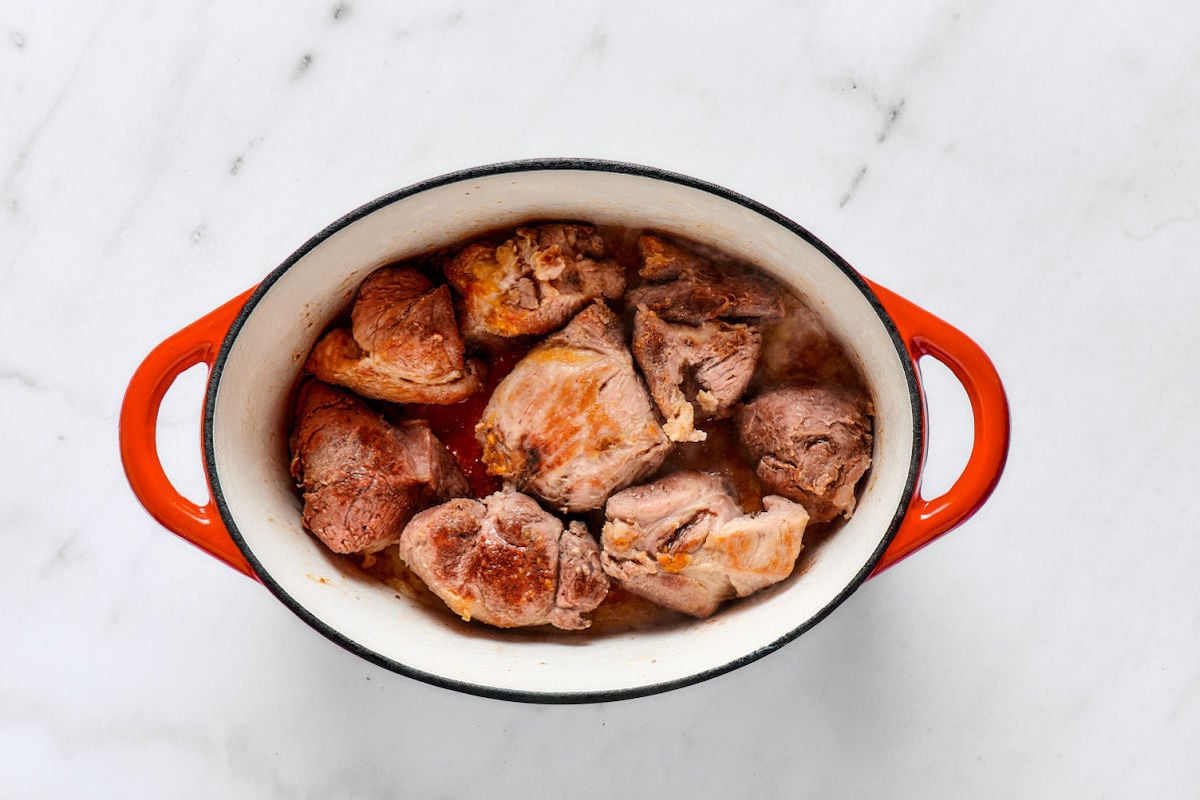
Step 2 – Slow-cook the pork
Transfer the pork to a large oven-safe dish. Add the chopped onion, minced garlic, salsa, bay leaves, and stock.
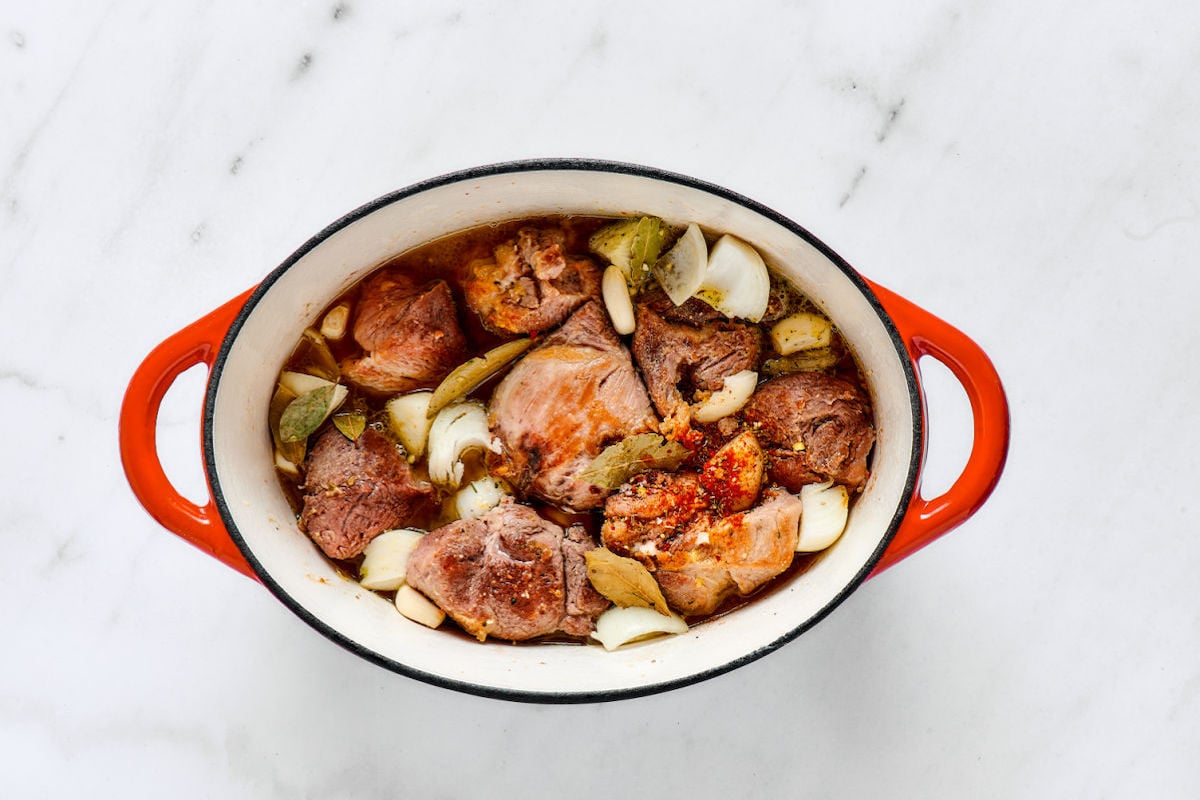
Cover the dish with foil and put it in the oven preheated to 140C/275F degrees. Cook for 6 hours.
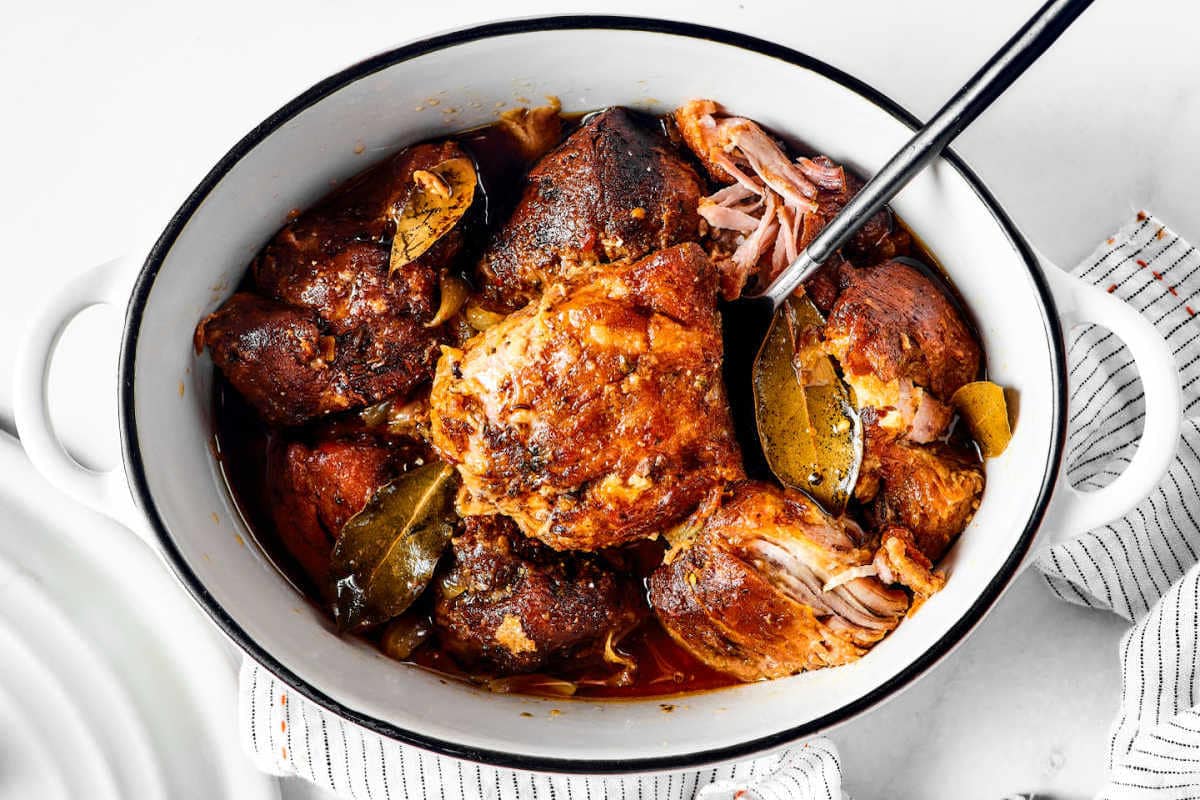
Step 3 – Shred and serve
Once cooked, remove the pork from the oven and let it rest for a few minutes. Then shred and enjoy.
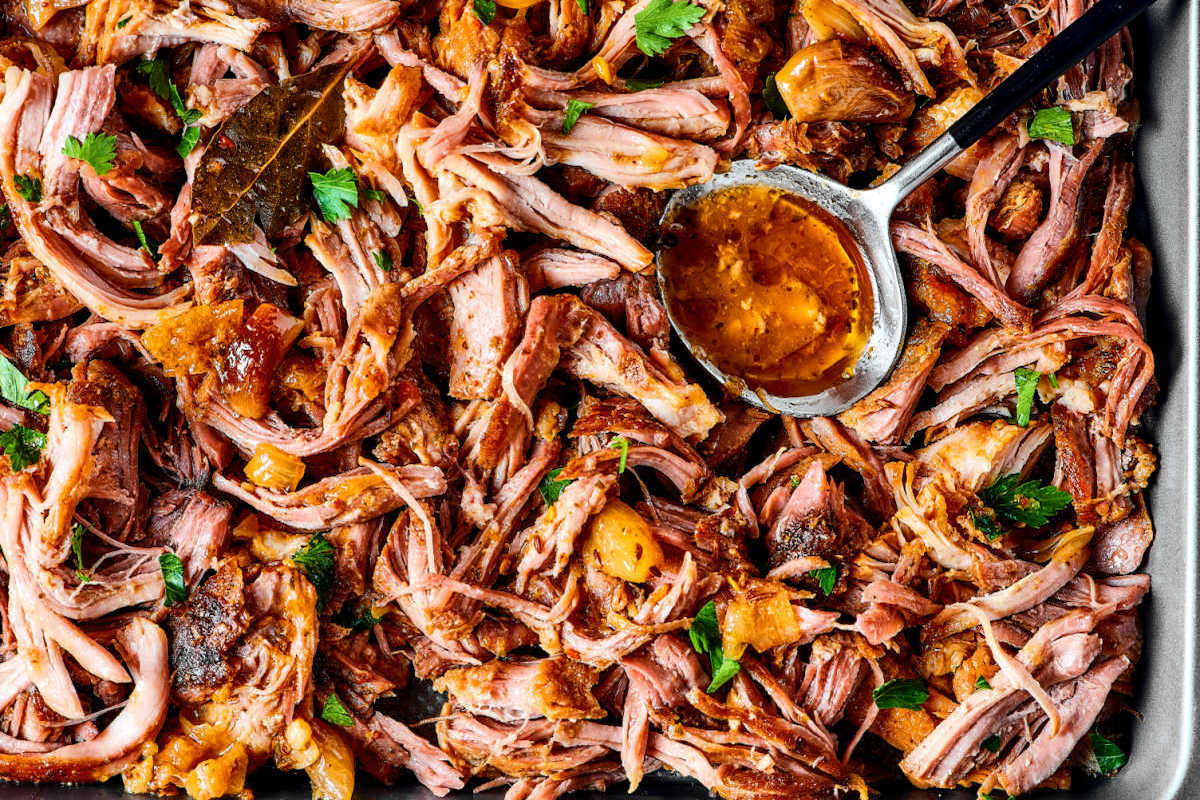
What type of meat is best for carnitas?
The best cuts to use for carnitas are pork shoulder, pork butt, and pork picnic. The pork butt is actually the upper half of the pig’s shoulder, while the picnic cut is the lower portion.
Tips to make the best recipe
- Brine the pork. Brining the pork shoulder before cooking can infuse it with more flavor and make it extra juicy. You can dry brine the pork for 12 hours or leave it in a saltwater solution for at least 1-2 hours.
- Bring the meat to room temperature. Before cooking the pork, allow it to sit at room temperature for 20 to 30 minutes.
- Make it spicy. Rub the pork shoulder with more cayenne pepper if you prefer spicy carnitas.
- Cook in orange juice. Add some orange juice to the meat and the broth, and allow it to cook off. The citrus juice helps break down the meat and brightens its flavor (like in orange chicken).
Storage instructions
To store. Store leftover carnitas in an airtight container in the fridge for up to 4 days.
To freeze. If you have made a big batch of carnitas, divide some into portions and freeze them in heavy-duty plastic bags or in airtight containers. Carnitas can be frozen for two months or longer.
To reheat. Reheat carnitas in a covered dish in the oven or on the stove over medium heat. Add a splash of water or broth to the meat to reheat it.

Recipes to use carnitas in
Stereotypically, we love to use leftover pork carnitas in some of our favorite Mexican recipes (and south American ones)! Here are some ideas:
Frequently asked questions
Both methods involve slow-cooking the pork for several hours and then shredding it. But there are a few key differences between pulled pork and carnitas. The latter is a Mexican dish and is seasoned with Mexican spices. Also, the pork can be cooked in the oven, slow cooker, or stove.
Pulled pork, a popular dish in the US, is often made from barbequed pork shoulder. The pork may be slow-smoked or cooked in a slow cooker. Pulled pork is often mixed with a sauce once it’s shredded.
Pork butt is not the same as pork shoulder. They both come from the pig’s shoulder, but pork butt sits higher on the foreleg.
Slow-cooked carnitas is a good source of protein. They are a source of vitamins A and C and essential minerals such as iron, calcium, and potassium. Consumed in moderation and in combination with healthy foods, carnitas can make part of a balanced diet.
Yes, you can cook this dish in a slow cooker. Once you sear the meat, add it to a 6-cup slow cooker and cook on low heat for 8-10 hours. Shred with two forks before serving.
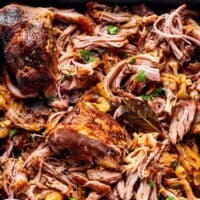
Preheat the oven to 140C/275F. Rub the taco seasoning all over the pork, ensuring all the exterior is coated.
Add the oil to a large skillet or deep pot and place over medium heat. Once hot, add the pork and cook on all sides until brown.
Transfer the seared pork to a large baking dish. Top with the onion, garlic, salsa, and bay leaves, and drizzle the stock.
Cover the baking dish with tin foil and cook for 6 hours.
Remove from the oven and let it sit for 5 minutes before shredding.
Serving: 1serving | Calories: 261kcal | Carbohydrates: 6g | Protein: 28g | Fat: 13g | Sodium: 622mg | Potassium: 558mg | Fiber: 1g | Vitamin A: 497IU | Vitamin C: 5mg | Calcium: 33mg | Iron: 2mg | NET CARBS: 5g


No Comments Yet